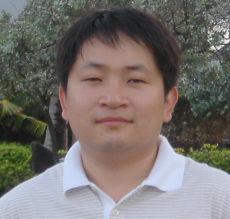The IASTED International Conference on
Technology for Education and Learning
TEL 2011
October 24 – 25, 2011
Beijing, China
KEYNOTE SPEAKER
Research on the Organization Model of Ubiquitous Learning Resource — The Concept and Architecture of Learning Cell
Abstract
With the development of pervasive computing and Internet technologies, information space will be seamlessly blended with physical space to form a ubiquitous information space combing reality with fantasy. That makes learning more and more ubiquitous, happening on demand, anytime and anywhere. Under such context, how to organize learning resources to support anytime, anywhere, on demand and adaptive learning is an emerging problem.There is a new tendency, which is characterized by sharing the learning processive information, enhancing the intelligence of resource, implementing the evolution of learning content and creating a new resource construction mode based on Web 2.0, in the area of constructing and sharing of learning resource after the emergence of latest learning technologies like Reusable Learning Unit, Learning Object and Learning Design.
Current learning technologies concern learning resource sharing in a closed structure, ignoring the sustainable development and evolutionary capability of learning resources, the dynamic and generative connections between learning resources as well as between learners and teachers. Realizing that problem, we carry out research on the organization model of learning resources and explore the organizational framework theory and practical foundations of learning resources in ubiquitous learning. Beyond learning object, our research proposed a new d promising learning resource framework, named by Learning Cell (LC), for learning resources, which can better support informal learning, and the community construction and sharing of learning resources with the essential features of evolutionary. The “cell” in here we means: (1)Component: learning cells can compose higher-level learning resources; (2) Origin: learning cells grow from small to big, from weak to strong; (3) Nerve cell: learning cells can be united to get intelligence.
Learning cell will be adapted to ubiquitous learning and informal learning environment, and has some basic characteristics including utilizing collective wisdom, sustaining evolvement, generative information sharing, distributed runtime resource sharing, social network sharing, intelligent resources, etc. Learners could share the advanced wisdom from learner community and kinds of learning tools with it. Learning Cell is one of the significant elements in future seamless learning space supported by pervasive computing technology, and will be the keystone in ubiquitous learning realizing.
Biography of the Keynote Speaker

Dr. Shengquan Yu is a professor of Educational Technology, and Dean of the School of Educational Technology at Beijing Normal University, China. He serves as Director of the Knowledge Media Lab at Beijing Normal University, and Deputy Director of the Engineering Research Center of Digital Learning and Educational Public Service, Ministry of Education.
He is a fellow of the China E-learning Standard Committee, an Educational Technology consultant of Higher Education Press, a consulting expert of the 12th Five-Year Informationization Plan of the Chinese Academy of Science, a Technical Committee member of the Shanghai Digital Educational Equipment Engineering Research Center, a research fellow of the China Educational Policy Research Institute, an Expert Committee member of the National Medical Test Center, and an Expert Committee member of the Ten Year National Educational Technology Plan. He is also an expert committee member of Distance Education Journal, Information Technology in Elementary and Secondary Education, and Information Technology in Education.
His research focuses on the following areas: design and sharing of ubiquitous learning resources; integrating information technology into curricula; design and application of e-learning platforms; the theory and practice of regional e-learning; educational information ecology; educational technology standards; and knowledge media. Dr. Yu has served as primary investigator on many projects, published over 100 papers for academic journals, and written several academic books. He has implemented his teaching reform experiments in more than 200 schools, which currently has a widespread influence on educational technology in China. For more information, please refer to http://www.etc.edu.cn/yusq.









